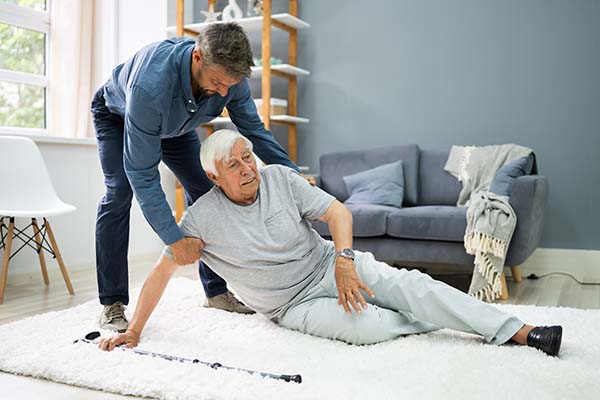Today, there is an entire senior industry built around responses and preventative measures to protect older people from falling, and with good reason. According to the National Council on Aging Falls Prevention Facts, “falls remain the leading cause of fatal and nonfatal injuries for older Americans.” Aside from grievous and sometimes fatal injuries, falls are costing money, lots of money. In 2015 Medicare and Medicaid paid 75 percent of the 50 billion dollars in total cost due to fall injuries. With an ever-aging US population, the financial toll is projected to reach 67.7 billion dollars in 2020.
The Centers for Medicare and Medicaid Services (CMS) made a declaration that falls should never happen in a hospital environment and created penalties that became effective in 2008. The penalty still allows for patient care billing through CMS but will no longer bump payments up to a higher level to cover the treatment of fall-related issues. The advent of the Affordable Care Act (ACA or “Obamacare”) saw Congress introduce more stringent penalties by reducing federal payments by one percent for those hospitals with the highest rates of falls as well as other hospital-acquired conditions. The financial aspect is of significant concern as the American Hospital Association (AHA) finds that nearly one-third of US hospitals report negative operating margins.
These government assessed fall penalties could damage a hospital’s reputation and reduce its profitability. As a result, many hospital policies are now overzealous with regards to fall prevention, creating an epidemic of patient immobility. While this epidemic may serve the financial interests of hospitals, it does not serve the needs of older hospitalized patients. There are nominal reasons that hospitals are promoting increased “bed rest.” These reasons include a shortage of staff, insufficient walking equipment, and no current means to record ambulation in a patient’s electronic medical record. Some nurses and hospital aides, to evade being reprimanded if a patient under their supervision falls, find reasons to avoid getting a patient out of bed and walking. Patients themselves are being instructed not to get up on their own and are subject to bed alarms that will alert hospital staff if they do.
Elderly patients are bedbound and discouraged from walking. This practice degrades the patient’s mental well being and their ability to become well to protect hospital profitability. Many older patients are weak and frail upon hospital admission, and after a few days in bed, find their muscles can deteriorate significantly enough to bring severe long-term consequences. Dr. Kenneth Covinsky, a researcher and geriatrician at the University of California-San Francisco, states, “Older patients face staggering rates of disability after hospitalizations.” His research cites that one-third of patients age 70 or more leave the hospital more disabled than when they were admitted.
Ultimately the policies put in place to reduce the number of falls in a hospital setting have created a climate of “fear of falling.” Hospital staff feels that a patient falling on their watch will lead to blaming, reprimands, even termination when the fault of the fall might be the patient themselves. This staff self-protection mechanism creates a cycle where the patient languishes in bed, growing weaker by the day. When they do get up, the patient is more likely to fall and become more seriously injured due to a decrease in muscle coordination and an increase in strength deterioration.
Barriers to the mobilization of elderly hospital patients do them a great disservice and may lead to increased length of hospital stay as well as disability after hospitalization. The limiting of patient mobility may have begun as a response to financial penalties but has very serious, though perhaps unintended, patient health consequences. Inpatient walking activity is a good predictor of readmission in elderly Americans. Research shows that just 275 steps a day while in the hospital yields lower rates of readmission after 30 days. Programs such as the Hospital Elder Life Program (HELP) are trying to reduce the barriers to patient mobility and reverse the epidemic of elder patient immobility. Across America, there are efforts to get patients moving again in special hospital wings called Acute Care for Elders. In these specialized settings, elderly patients can be provided the proper staff and equipment to walk and enhance their rehabilitation and wellness safely. For the best elderly patient outcomes, the trend of patient immobility must become less prevalent in hospitals despite the risk of falls.
We hope you found this article helpful. If you have any questions or would like to discuss a personal matter, please contact our Sherwood or Searcy at 501-834-2070; we look forward to hearing from you.

